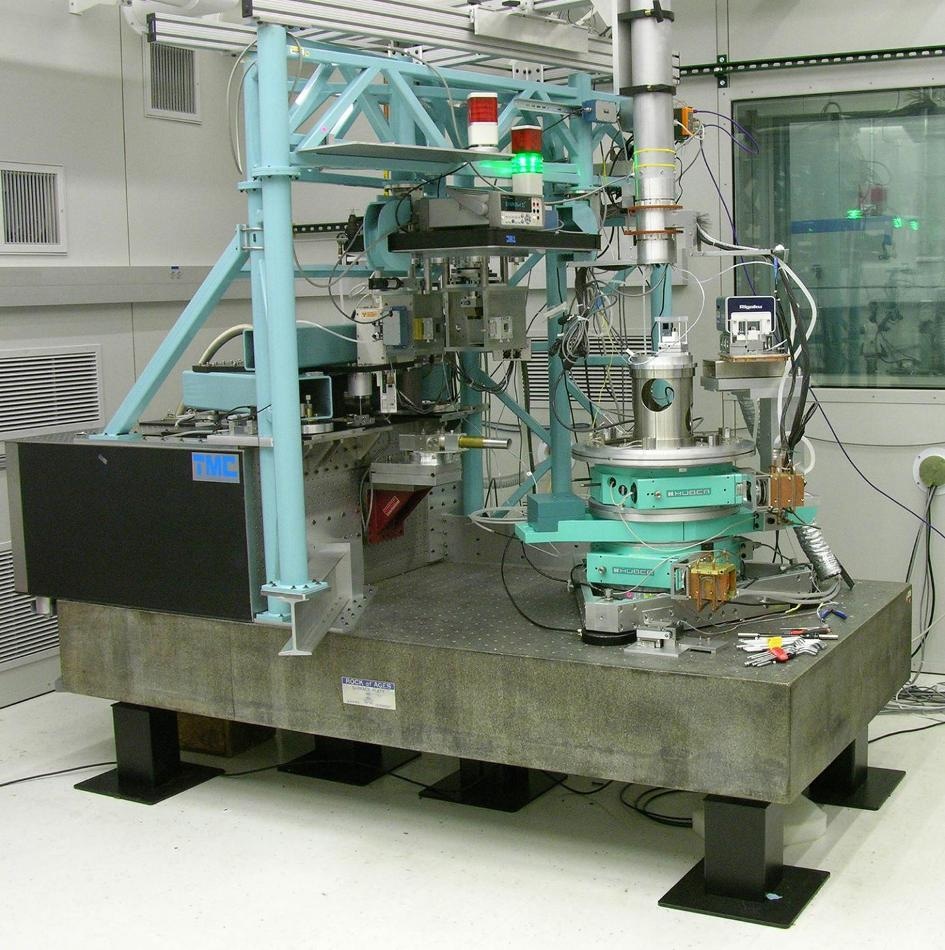May 15 2017
Scientists from the National Institute of Standards and Technology (NIST) have produced and accurately measured an X-ray spectrum by employing an innovative, ultra-modern device. It took around 20 years to construct the device and it is sure to assist the scientists working at the agency to carry out the world’s most precise measurements of materials, for use in everything from bridges to pharmaceuticals.
This will also make the measurements of materials from other laboratories around the globe equally reliable.
 NIST's new X-ray machine for high-precision measurement of the Copper Alpha spectrum, shown here in its 0.01 degree C temperature-regulated space. CREDIT: Jim Cline.
NIST's new X-ray machine for high-precision measurement of the Copper Alpha spectrum, shown here in its 0.01 degree C temperature-regulated space. CREDIT: Jim Cline.
However, the procedure for developing the device for carrying out the new measurements was laborious.
This new specialized precision instrument required both a tremendous amount of mechanical innovation and theoretical modeling. That we were able to dedicate so many years and such high-level scientific expertise to this project is reflective of NIST’s role in the world of science.
James Cline, Project Leader of the NIST Team
“The wavelength of an X-ray is a ruler by which we can measure spacings of atoms in crystals,” explained Marcus Mendenhall, who is the lead author of a new paper published in the Journal of Physics B: Atomic, Molecular and Optical Physics, which employs the new device for measuring the copper X-ray emission spectrum. “We now know the length of our ruler better, and all kinds of materials can now be measured with improved accuracy.”
The new device will enable the research team to confidently relate the measurements of the lattice spacings to the definition of the meter in the International System of Units (SI). The comparisons with the SI meter ensure quality assurance at the smallest and most accurate levels.
The researchers' measurements were consistent with results from the past 40 years and captured new details of the X-ray spectrum. Besides the lattice spacings, all the elements used for making measurements were entirely traceable to the SI, ensuring the precision and authenticity of the measurements.
Although X-ray work is mostly related to medical care, X-ray devices are also extensively used in commercial applications because of their ability to identify and characterize a wide array of regular substances such as ceramics, cement, electronics, metals and medicines.
X-rays enable researchers to analyze the inner matter in industrial as well as medical applications. Considering injured people, it may relate to investigation of the inside of a body to observe complications, for example, broken bones. However, X-rays are also employed to analyze the atomic structure of substances by using a technique called diffraction.
Powder diffraction, carried out by grinding a substance and analyzing it using a precision X-ray machine, has turned out to be a universal analytical method. At present, globally over 30,000 laboratory diffractometers are being employed to observe crystals using X-rays by means of powder diffraction methods. Moreover, there are universally hundreds of powder diffractometers that utilize non-traditional kinds of radiation, for example, radiations from neutron sources and synchrotron.
NIST produces Standard Reference Materials (SRMs) for academic and industrial research. SRMs are indispensable not only for quality assurance purposes but also to corroborate the precision of particular measurements. In addition, NIST also generates reference values necessary for calibrating laboratory X-ray devices around the globe. The innovative, high-accuracy device will have a vital role in the prospects of both the endeavors.
The X-rays produced by the new device (namely the K-alpha lines of copper) do not vary from the X-rays produced by numerous other X-ray devices. The X-rays are produced by firing electrons at a copper target. However, the difference is that many years of engineering and calculation has resulted in a device with the ability to scan a full circle around the sample with exceptional precision. Moreover, an X-ray camera equipped in the new device provides valuable information when compared to conventional detectors, and enables self-consistency checks for aligning the sample and minimizes systemic uncertainties. The instrument was developed in a subterranean laboratory under a closely regulated temperature, thus enabling highly precise measurements to be taken.
The researchers’ rewarding achievement was the well-characterized goniometer in the device, which is used for measuring the angles between the faces of crystals forming typical samples of solid materials. The machine is calibrated using the circle closure method, a technique that uses multiple comparisons of the differences between two or more angular scales, repeatedly rotated with respect to each other to determine measurement uncertainties in each scale. This—coupled with a broader scan range—enables precise measurement of the angle between the crystals and hence the X-ray spectrum, without altering the crystal alignment.
At present, Mendenhall and Cline are aiming to update the measurements of numerous SRMs and other significant X-ray lines—from other materials other than copper—in the NIST catalog using their innovative device. This process will require more time as few weeks or even months will be needed for this type of X-ray measurement. Luckily, much of the task involves just a small amount of human intervention as the machine is automated when a measurement is started, thus enabling the researchers to persistently investigate other research areas when the device performs its function.
The goal was not to make a machine that the rest of the world and commercial entities can imitate and make themselves, but rather, to make a machine that can give everyone the best answer to measurement questions.
Marcus Mendenhall, Lead Author of The Journal of Physics B: Atomic, Molecular and Optical Physics